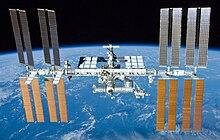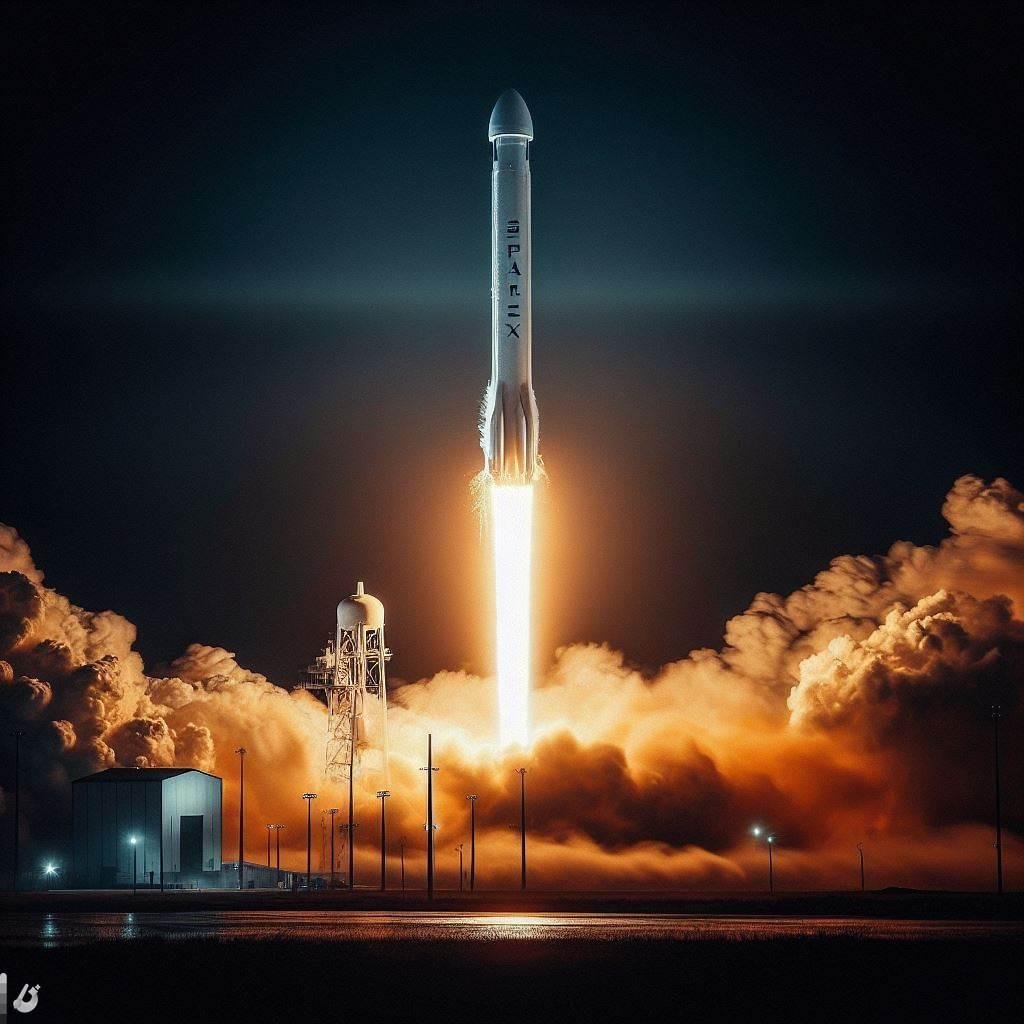As the sun dipped below the horizon of our pale blue dot, an awe-inspiring event unfolded in the vast expanse of space. On December 5, the world turned its gaze toward the International Space Station (ISS) as a vital resupply mission from SpaceX prepared for its undocking and departure. This moment marked not just the continuation of scientific discovery but also a testament to human ingenuity and collaboration in the realm of space exploration. Join us as we explore the intricate choreography of this historic operation, the technology behind it, and the implications of the cargo being sent back to Earth. In the following sections, we delve into the details of the mission, highlighting the remarkable partnership between space agencies and commercial enterprises that is redefining our presence in low Earth orbit.
Mission Overview and Objectives of the SpaceX Resupply Mission
The recent SpaceX resupply mission is a vital component of NASA’s ongoing efforts to maintain a sustainable presence in low Earth orbit. With a focus on supporting the International Space Station (ISS), this mission aims to deliver essential supplies and equipment for scientific research, technology development, and crew support. The spacecraft, equipped with cutting-edge technology, is expected to carry out a series of deliveries that include:
- Research Materials: Critical experiments aimed at advancing our understanding of various scientific fields.
- Personal Supplies: Food, clothing, and hygiene products for astronauts aboard the ISS.
- Hardware Components: Instruments and tools necessary for maintenance and upgrades of the station.
In alignment with the mission’s goals, the crew aboard the ISS will utilize the newly delivered supplies to conduct various experiments in microgravity. The successful execution of this resupply mission plays an integral role in the following objectives:
- Enhancing Sustainability: Ensuring the ISS is stocked with necessary resources for long-term human exploration.
- Scientific Innovation: Supporting groundbreaking experiments that can benefit life on Earth and future space missions.
- International Collaboration: Promoting partnerships between nations in the field of space exploration and research.

Significant Contributions to ISS Operations and Research
The recent undocking and departure of the SpaceX resupply mission from the International Space Station (ISS) on December 5 marks a pivotal moment in the ongoing operations and research initiatives aboard the orbiting laboratory. This mission is part of NASA’s Commercial Resupply Services contract with SpaceX, emphasizing the collaborative effort to maintain a continuous presence in low Earth orbit. The successful transfer of supplies enhances the station’s capability to support various scientific experiments and critical daily operations, tools essential for sustaining the lives of astronauts and advancing human exploration into deeper space.
Throughout its operational history, the ISS has been a platform for groundbreaking research that has significantly contributed to our understanding of a wide range of scientific fields. Notable areas of focus include:
- Biotechnology: Experiments on the ISS have led to advances in medical treatments and the development of new materials.
- Earth and Space Sciences: The unique vantage point of the ISS facilitates observation of climate change, natural disasters, and other global phenomena.
- Human Physiology: Studies regarding the effects of microgravity on the human body inform both astronaut health and broader medical science.
| Research Area | Key Contribution |
|---|---|
| Biotechnology | Advancements in tissue growth for regenerative medicine |
| Earth Sciences | New data on weather patterns and environmental shifts |
| Human Physiology | Understanding muscle atrophy and bone density loss in microgravity |

Preparing for Undocking: Key Procedures and Safety Protocols
As the moment of undocking approaches, the crew on board must meticulously execute a series of procedures to ensure a safe departure from the International Space Station (ISS). Checklist verification begins with confirming that all spacecraft systems are functioning correctly, followed by a thorough inspection of cargo manifests. Crew members are tasked with securing any remaining supplies and ensuring that all equipment is stowed away securely to prevent any potential hazards during the undocking process. Regular communication with mission control is critical, allowing for real-time updates and adjustments as needed.
Safety protocols are paramount during this operation, with the crew trained to respond effectively to unforeseen circumstances. Key safety measures include:
- Ensuring that all crew members are positioned in designated seats during undocking.
- Maintaining clear communication channels between the ISS and the spacecraft.
- Conducting final checks on the SSR (Spacecraft Separation Release) mechanisms.
- Engaging backup systems if primary systems fail.
In preparation of this pivotal moment, simulated training sessions are conducted to familiarize the crew with the undocking sequence, enhancing their confidence and readiness for the live operation.

Future Prospects and Recommendations for Upcoming Resupply Missions
The recent successful resupply mission to the International Space Station (ISS) marks a pivotal moment in the ongoing partnership between SpaceX and NASA. As we look toward future missions, it is essential to consider the lessons learned and advancements in technology that can enhance these efforts. Strategic planning for upcoming resupply missions should include increased cargo capacity, improved robotic systems, and sustainability measures to minimize environmental impacts. Additionally, exploring potential collaborations with international space agencies can diversify logistics and foster shared research opportunities that benefit all involved parties.
Future resupply missions should also prioritize timely delivery of scientific equipment and crew supplies to ensure the continuous operation of experiments aboard the ISS. Establishing a comprehensive timeline for materials delivery, coupled with regular mission reviews, can streamline operations and enhance responsiveness to unforeseen challenges. Key aspects to focus on include:
- Regular upgrades to Falcon 9 technology for increased reliability
- Expansion of research payload options to accommodate diverse scientific inquiries
- Enhanced communication systems for real-time data sharing with ground control
| Aspect | Importance |
|---|---|
| Cargo Flexibility | Enhances capability to meet diverse mission needs |
| Robotic Automation | Reduces human workload and increases efficiency |
| International Collaboration | Promotes knowledge exchange and shared resources |
Q&A
Q&A: Undocking and Departure from ISS of SpaceX Resupply Mission Set Dec. 5
Q1: What is the SpaceX Resupply Mission, and why is it significant?
A1: The SpaceX Resupply Mission, specifically the one scheduled for December 5, serves as a critical lifeline for the International Space Station (ISS). It brings essential supplies, scientific equipment, and experiments that ensure astronauts can continue their work in orbit. Each mission helps maintain the infrastructure of the ISS and supports ongoing research that benefits life on Earth.
Q2: What can we expect during the undocking process?
A2: The undocking process involves the Dragon spacecraft gracefully detaching from the ISS. This maneuver will be meticulously executed, adhering to a carefully timed schedule to ensure a safe and controlled departure. Typically, this may include a series of checks and balances to confirm that all systems are functioning as expected, followed by the explosive release of hooks that connect the spacecraft to the station.
Q3: How does this mission contribute to scientific research?
A3: This resupply mission is essential as it carries a batch of experimental payloads designed to explore various scientific questions. These can range from studying the effects of microgravity on biological systems to testing new technologies for future deep-space exploration. The data collected during the mission will be invaluable for understanding our universe and improving life on Earth.
Q4: What happens after the spacecraft undocks from the ISS?
A4: Following the undocking, the Dragon spacecraft will perform a series of maneuvers to establish its orbit before it begins its return journey to Earth. This involves executing carefully calculated thruster burns to adjust its trajectory, ensuring that it safely re-enters the atmosphere before deployment of its parachutes for a splashdown in the ocean.
Q5: How can the public engage with this mission?
A5: Space enthusiasts and the general public can engage with the mission by watching live streams of the undocking event provided by NASA and SpaceX. Social media channels and official websites will also offer updates, images, and background information, allowing everyone to be part of this exciting phase of exploration. Join discussions online to share your thoughts and excitement!
Q6: What is next for the Dragon spacecraft after its departure?
A6: Once the Dragon spacecraft safely returns to Earth, it will likely bring back important cargo, including experimental results and research samples. This return leg of the mission is just as critical as the journey to the ISS, as it completes the cycle of experimentation and contributes to the wealth of knowledge gained during the mission. After its recovery, the spacecraft may also be evaluated for potential reuse in future missions, highlighting the sustainability of SpaceX’s operations.
Q7: How often do resupply missions like this occur?
A7: Resupply missions to the ISS happen regularly, typically several times a year, coordinated by various space agencies and commercial partners. SpaceX is one of the prominent providers of these services through its Commercial Crew and Cargo Programs. The schedule for these missions is planned well in advance to ensure a continuous supply chain to support the astronauts aboard the ISS.
Q8: Why is collaboration between different space agencies important?
A8: Collaboration between space agencies like NASA, ESA, and private companies like SpaceX fosters innovation, shares the financial burdens of space exploration, and maximizes scientific output. By pooling resources and expertise, they enhance the capabilities for research and exploration, ensuring a more robust and successful presence in low Earth orbit and beyond.
Stay tuned for more updates as the undocking approach date approaches, and don’t miss the chance to witness this incredible feat of engineering and science!
To Conclude
As we conclude our exploration of the SpaceX resupply mission and its undocking from the International Space Station on December 5, we are reminded of the intricate dance of technology and human ingenuity that keeps our aspirations of space exploration alive. This mission not only underscores the importance of international collaboration in science but also paves the way for future journeys into the cosmos.
With each resupply, we are not just sending cargo; we are fostering new research, advancing our knowledge, and dreaming of possibilities beyond our planet. As the Dragon spacecraft makes its way back to Earth, it carries with it the hopes and discoveries of astronauts and scientists alike.
As we look forward to the next chapter in this ongoing saga of exploration, we invite you to stay tuned for more updates from space, where every mission brings us one step closer to unraveling the mysteries of the universe. Until next time, let us continue to gaze at the stars, inspired by the shimmering tapestry of our shared cosmic journey.

